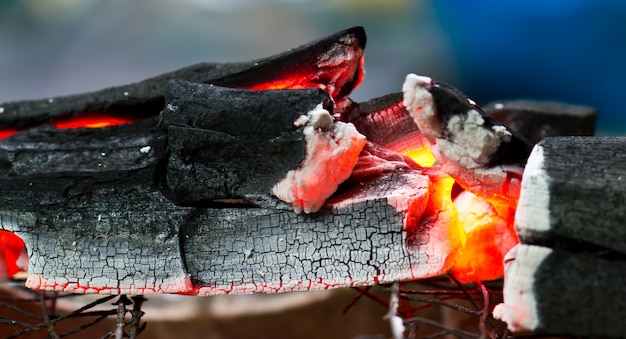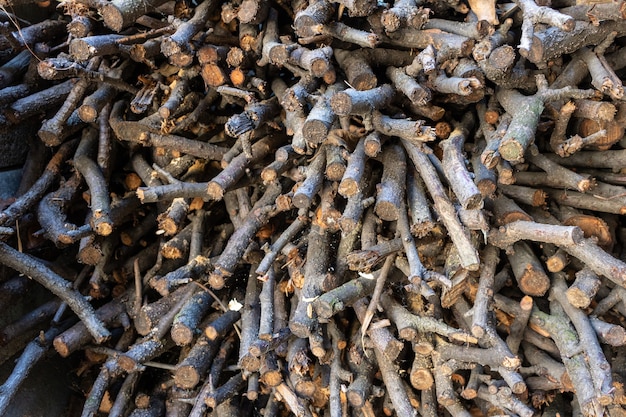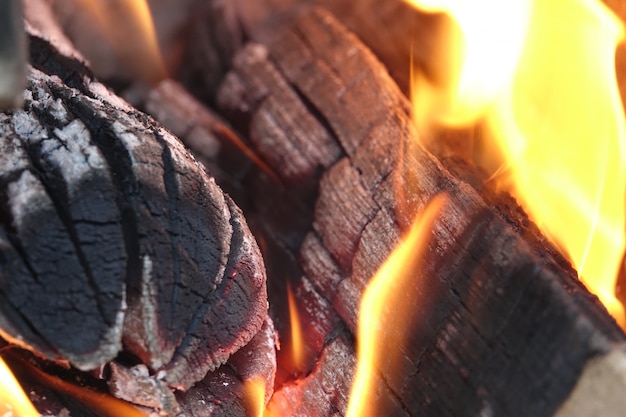How do you add smoky flavor without charcoal?
When it comes to adding that delicious smoky flavor to your food, charcoal grilling is often the go-to method. However, for those who don’t have access to a grill or simply prefer alternative cooking techniques, there are still plenty of ways to achieve that smoky taste without using charcoal.
Smoking with Wood Chips
One popular method is to use wood chips in your cooking process. By soaking the wood chips in water for about 30 minutes and then placing them on a hot grill or in a smoker box, you can create smoke that infuses your food with a rich smoky flavor. Different types of wood chips, such as hickory, mesquite, or applewood, can impart different flavors, allowing you to experiment and find your favorite combination.
Using Smoked Seasonings
If you’re looking for a quick and convenient way to add smoky flavor, consider using smoked seasonings. These are typically made by smoking spices, such as paprika, cumin, or salt, and adding them to your dishes. Whether you’re grilling, roasting, or even sautéing, sprinkling some smoked seasonings can instantly elevate the flavor profile of your food.
Infusing with Liquid Smoke
An easy way to add smoky flavor to your cooking is by using liquid smoke. This concentrated flavoring is made by capturing the smoke from burning wood, condensing it into a liquid form. It can be added directly to marinades, sauces, or even drizzled over grilled vegetables for a smoky kick. Just remember to use it sparingly, as a little goes a long way.
Grilling on a Stovetop
If you don’t have access to a traditional outdoor grill, fear not. Stovetop grilling can provide a similar smoky flavor experience. By using a grill pan or cast iron skillet, you can achieve those coveted grill marks and smoky char. Simply preheat the pan, brush some oil onto your food, and cook it over medium-high heat. The result will be a deliciously smoky dish that’s perfect for indoor cooking.
Smoking with Herbs and Spices
Another way to add a hint of smokiness is by smoking your food with herbs and spices. This technique involves placing aromatic herbs and spices directly on hot coals, or in a smoker box, to create smoke. The smoke infuses the food as it cooks, giving it a subtle smoky flavor. Some popular options include dried rosemary, thyme, or even tea leaves.
“Adding smoky flavor to your food doesn’t always require charcoal. With alternative methods like wood chips, smoked seasonings, liquid smoke, stovetop grilling, or smoking with herbs and spices, you can enjoy that smoky taste all year round, no matter where you are.”
To help you better understand the different ways to add smoky flavor without charcoal, here is a table summarizing the various methods:
| Method | Description | Pros | Cons |
|---|---|---|---|
| Wood Chips | Soaked wood chips placed on a hot grill or in a smoker box | Imparts rich smoky flavors; variety of wood chip options | Requires access to a grill or smoker |
| Smoked Seasonings | Spices smoked and added to dishes | Quick and easy; adds instant smoky flavor | May not provide the same depth of flavor as other methods |
| Liquid Smoke | Concentrated flavoring made from condensed smoke | Convenient; can be used in various recipes | Use sparingly to avoid overpowering the dish |
| Stovetop Grilling | Grilling on a stovetop with a grill pan or cast iron skillet | Perfect for indoor cooking; achieves grill marks | May not provide the same smoky intensity as outdoor grilling |
| Smoking with Herbs and Spices | Placing herbs and spices on hot coals or in a smoker box | Infuses subtle smoky flavors into food | Requires access to heat source for smoking |
In conclusion, there are several ways to add smoky flavor to your food without charcoal. Whether you choose to use wood chips, smoked seasonings, liquid smoke, stovetop grilling, or smoking with herbs and spices, each method offers its own unique benefits. Experiment with these techniques to discover your preferred way of adding that delicious smoky taste to your dishes.
What is good to soak wood chips for smoking?
When it comes to smoking food, using the right type of wood chips and preparing them properly can greatly enhance the flavor of your dishes. Soaking wood chips is a common practice as it helps to slow down the combustion rate and produce a steady stream of smoke. But what should you soak your wood chips in for the best results?
Water:
The most commonly used liquid for soaking wood chips is water. Soaking in water provides a clean base that allows the natural flavors of the wood to shine through. It also helps to prevent the chips from burning too quickly, making them last longer during the smoking process. To soak wood chips in water, simply submerge them in a bowl or container for at least 30 minutes before use.
Beer:
For beer lovers, soaking wood chips in their favorite brew can add an extra layer of flavor to the smoked food. The sugars and other ingredients in beer can infuse into the chips, imparting unique tastes and aromas. Be sure to use a beer that complements the type of food you are smoking. Soak the chips in the beer for approximately 30 minutes before placing them on the heat source.
Apple Juice:
If you’re looking for a fruitier flavor profile, soaking wood chips in apple juice is a great option. The natural sweetness of the juice can add a subtle hint of apple flavor to your smoked dishes. Simply pour enough apple juice to cover the wood chips and let them soak for about 30 minutes. This method works particularly well for pork and poultry.
Wine:
For those who enjoy experimenting with flavors, soaking wood chips in wine can provide an interesting twist to your smoked food. The tannins and the fruity notes of wine can infuse into the chips, creating unique smoky flavors. Red wines work best for red meats, while white wines pair well with fish and lighter meats. Soak the chips in the wine for approximately 30 minutes before using them.
Note: Regardless of the liquid you choose to soak your wood chips in, it’s important to remember that soaking alone won’t produce smoke; they need to be placed on hot coals or in a smoker box to create smoke.
How do you smoke meat with wood chips?
If you’re a fan of smoky and flavorful meat, using wood chips for smoking is a great technique to achieve that delicious taste. Whether you’re an experienced pitmaster or a beginner, smoking meat with wood chips can be a rewarding way to enhance the flavors of your favorite cuts. Here’s everything you need to know about smoking meat with wood chips.
Choosing the Right Wood Chips
The type of wood chips you use can significantly impact the flavor profile of your smoked meat. Different woods, such as hickory, apple, cherry, or mesquite, have distinct flavors that pair well with specific types of meat. For example, hickory is excellent for pork, while apple wood produces a mild and fruity flavor that complements poultry and fish.
Preparing the Wood Chips
Before using wood chips, it’s crucial to properly prepare them. Soak the wood chips in water for at least 30 minutes to ensure they smolder and produce smoke instead of catching fire. This step helps control the temperature and prevents the chips from burning too quickly.
Using Wood Chips for Smoking
When using a charcoal grill or smoker, create a fire on one side of the grill and place a pan of water opposite the fire to maintain moisture. Once the coals are hot, drain the wood chips and scatter them over the coals. Close the lid and adjust the vents to control the airflow and temperature. The smoke produced by the wood chips will infuse the meat with delicious flavors as it cooks slowly.
Pro Tip: Remember to keep an eye on the temperature to ensure even cooking and avoid drying out the meat. Use a digital meat thermometer to monitor the internal temperature of the meat.
“Smoking meat with wood chips adds complexity and depth to the flavor profile, creating a culinary experience that is hard to match.” – BBQ enthusiast
Wood Chip Smoking Times and Temperatures
Each type of meat requires different smoking times and temperatures to achieve perfection. Here’s a rough guide to help you get started:
| Meat | Temperature | Smoking Time |
|---|---|---|
| Brisket | 225°F (107°C) | 12-16 hours |
| Ribs | 225°F (107°C) | 4-6 hours |
| Chicken | 250°F (121°C) | 2-3 hours |
Pro Tip: Remember, these times and temperatures are just guidelines. Always rely on the internal temperature of the meat to determine doneness.
Smoking meat with wood chips takes time and practice, but the end result is well worth the effort. Experiment with different types of wood and cuts of meat to discover your favorite combinations and create mouthwatering dishes that will impress your friends and family!
Is it better to smoke with wood or pellets?
When it comes to smoking food, using wood or pellets as fuel can both produce delicious results. However, there are differences to consider when deciding which option is better for you. Let’s explore the pros and cons of each.
Wood Smoking
Using wood for smoking gives your food a traditional, smoky flavor that many barbecue enthusiasts love. It provides a rich and authentic taste that can’t be replicated with any other fuel source. However, wood smoking requires more attention and skill to maintain a consistent temperature. It can also be more time-consuming to get the fire started and maintain it throughout the smoking process.
Pros of Wood Smoking:
- Authentic smoky flavor
- Traditional method
- Wider variety of wood flavors available
Cons of Wood Smoking:
- Requires more attention and skill
- Can be time-consuming
- May produce more smoke and ash
Pellet Smoking
Pellet smokers use compressed wood pellets as fuel, which are easier to handle and offer more convenience. They provide a consistent and precise temperature control, making it easier to achieve the desired results. Pellets also produce less smoke and ash compared to wood, resulting in less clean-up after smoking.
Pros of Pellet Smoking:
- Easier temperature control
- Convenient to use
- Less smoke and ash
Cons of Pellet Smoking:
- May lack the same depth of smoky flavor as wood
- Limited variety of pellet flavors available
In the end, the choice between wood and pellets depends on personal preference. If you prioritize the traditional smoky flavor and are willing to invest time and effort into the smoking process, wood might be the better option for you. On the other hand, if convenience and precise temperature control are more important, pellets offer a more user-friendly experience.
It’s worth noting that some smokers even allow for a combination of both wood chips and pellets, giving you the best of both worlds. Ultimately, experimenting with different fuel sources and techniques will help you find the flavor profile that suits your taste buds and cooking style.
How much wood chips to use when smoking?
When it comes to smoking delicious meats, one key element is the use of wood chips. The amount of wood chips you use can greatly impact the flavor and intensity of the smoke. Finding the right balance is essential for achieving that perfect smoky flavor in your meats.
Factors to Consider
There are a few factors to consider when determining how much wood chips to use:
- Type of Wood: Different types of wood impart different flavors. Stronger woods like hickory or mesquite require fewer chips compared to lighter woods like apple or cherry. It’s important to note that some woods may be overpowering if used excessively.
- Type of Meat: The type of meat being smoked also affects the amount of wood chips needed. Larger cuts of meat will require more chips to ensure proper smoke penetration.
- Smoker Size: The size of your smoker plays a role in the amount of wood chips needed. Larger smokers may require more chips to generate enough smoke.
Recommended Amounts
As a general guideline, starting with 1/4 to 1/2 cup of wood chips is a good baseline for most smoking sessions. However, it’s important to experiment and adjust based on personal preference and the factors mentioned above.
For lighter woods: such as fruitwoods, start with a smaller amount, around 1/4 cup, and gradually increase if desired.
For stronger woods: such as hickory or mesquite, a slightly larger amount, around 1/2 cup, may be used to achieve a bolder flavor.
Remember, the goal is to achieve a balanced smoke flavor without overpowering the natural taste of the meat.
As you become more experienced with smoking, you can fine-tune the amount of wood chips used based on your personal preferences. Keep in mind that it’s always better to start with less and add more if needed, as it’s easier to control the intensity of the smoke.
Enjoy the process of experimenting with different wood chip amounts and flavors to find the perfect balance for your smoking adventures!
Do Pellets Smoke Longer Than Wood Chips?
When it comes to smoking food, one of the important considerations is the type of fuel you use. Two commonly used options are wood chips and pellets. Many people wonder if pellets smoke longer than wood chips, as the duration of smoke can impact the flavor and cooking time of the food.
The answer to this question depends on several factors:
1. Composition
Pellets are made from compressed sawdust or wood shavings, which results in a denser and more concentrated fuel source compared to wood chips. This composition allows pellets to burn longer and produce consistent smoke throughout the cooking process.
2. Size
Pellets are typically smaller in size compared to wood chips. The smaller size means they can fit more densely in the fuel chamber, allowing for a longer burn time. However, it’s worth noting that some smokers and grills may not accommodate pellets, so it’s important to check your equipment’s compatibility before making a choice.
3. Moisture Content
The moisture content of the fuel also plays a role in burn time. Wood chips generally have a higher moisture content than pellets, which can result in shorter smoke duration. Properly dried wood chips will burn longer and produce more smoke.
Wood pellets offer a longer smoke duration compared to wood chips due to their composition and denser nature. However, choosing the right fuel ultimately depends on your specific grilling or smoking needs.
In summary, while both wood chips and pellets can be used for smoking, pellets tend to provide a longer smoke duration. If you’re aiming for an extended smoking time without constantly refilling the fuel chamber, pellets may be the preferred option. However, it’s essential to consider the compatibility of your equipment and the flavor characteristics of each fuel type to achieve the desired results.



